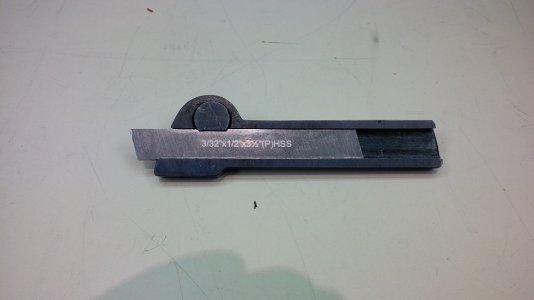Serious question, what mechanism enables parting off from the backside on a machine that is not constrained by the number of tools on the cross slide or it's travel to perform better?
Chip control, coolant flow? I'm not seeing it.
Yeah, its sort of hard to wrap your head around it but my personal experience suggests that a rear mounted tool improves rigidity. When parting from the front the cutting forces push the nose of the tool down and causes a lifting force on the tool holder. If there is flex or play in the carriage-holder interface or in the ways then the holder can move and allows the cutter tip to move and cause the tool to dig in. With a rear mounted tool these forces lift the nose of the tool. This lift translates into downforce at the tool holder on the carriage, eliminating play. It works.
In addition, since the tool is mounted upside down the relief angle under the tip now sits above the tip and acts like side rake on a turning tool. This reduces cutting forces and aids in chip ejection, thereby reducing cutting temperatures as well. Furthermore, since the tip is being lifted out of the cut by the cutting forces dig ins just don't happen.
Unlike parting from the front, where much of the cutting fluid is carried off by the chips before it even gets to the cutting tip, the fluid gets to the tip of an inverted tool first. This further reduces cutting temperatures and reduces friction.
In a shop-made holder that clamps the entire width of the blade such that the body of the blade is in firm contact with the side of the slot it sits in, the blade is held very rigidly. This allows a thin blade to cut much deeper than that blade would be able to cut when parting from the front. How much deeper? I use a P-1-N (0.040" thick) to cut 1-1/2" thick steel at high speeds without chatter so I would guess it doubles the depth capacity of that cutter.
On a heavy rigid lathe, rear mounting a parting tool may not make a difference but on a light lathe it definitely does. On a Sherline lathe you will have severe chatter when parting large diameter pieces of steel from the front, even at relatively low speeds, but a rear mounted tool will walk right through that same piece without a hint of chatter at much higher speeds. I haven't had a single dig in or any chatter in well over a decade of use so regardless of how it works, it does work.




